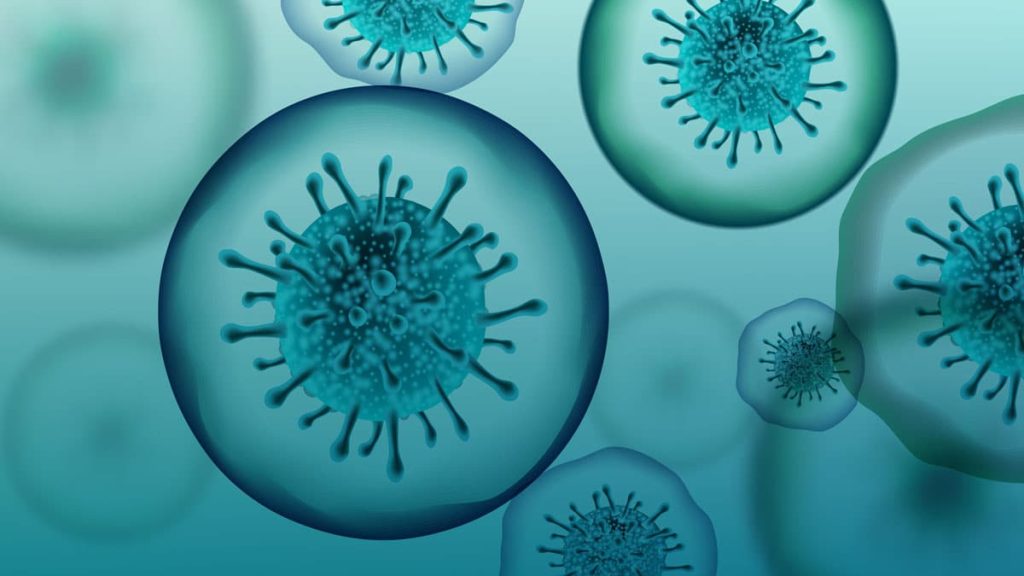News around the novel coronavirus has become ever present in this COVID-19 era. Suddenly scientists, medical professionals and HVAC building engineers are seeing the importance of indoor humidity levels to reduce virus transmission. The effect of indoor relative humidity level is not just on occupants and workers in terms of comfort. Dry conditions can have a very extreme negative effect on health and person-to-person transmission of viruses.
Indoor Humidity Colder Climates
Indoor humidity level has always meant something to folks in colder, extreme winter weather conditions. People who live with the heat turned on continuously for 4-6 months (at least) at a time understand how heating can dry out indoor environments. In turn, heating drys out the humans living in those environments. That’s why it’s not unusual to see many people in those colder climates such as the Northern United States, Canada and Northern Europe adding humidifiers, or even more substantial and larger humidity systems, to their homes.
Babies: Noses Need Humidity
New parents also understand the importance of keeping indoor conditions optimal for newborns. Higher relative indoor humidity sufficiently moisturizes delicate skin, respiratory systems and air passages. Higher humidity can help babies breath properly, especially if suffering from any type of cold or viral infection. Keeping conditions moist maintains the nasal mucous lining’s ability to fight off viruses. It’s the body’s first line of respiratory defense but needs optimal moisture to work properly.
Air Quality & Virus Transmission
Most people don’t consider high heat and high humidity to be comfortable. More temperate and maybe even slightly dryer conditions are what appeal to most. But the reason behind that comfort is only slightly understood by the average person.
What makes an environment comfortable for humans, they are discovering, may also be the key to containing and minimizing person to person virus transmission within indoor environments. That is the reason why ASHRAE, and now many medical researchers, are recommending Rh levels between 40-60% for indoor environments.
That is the reason why ASHRAE, and now many medical researchers, recommend between 40-60% relative humidity levels for indoor environments.
Virus Spread Surface v. Droplet
This year, information coming out of the medical research community has been spurred by the novel coronavirus pandemic. Research has confirmed that transmission of the virus that is most negative to humans is not when the droplet lands on a surface and how long it survives on that surface. Surface transmission of live viruses does play a role in the COVID-19 equation. When not addressed, surfaces can transmit the virus to humans who are not careful to disinfect high-touch surfaces and wash hands consistently.
What has come into focus and played a larger role in this pandemic is the exhalation of respiratory viruses in the form of droplets or a fine vapor from the lungs. This fine vapor from known-infected and–as we’ve found out often plays a larger but silent role–unknown-but-infected individuals has been shown to be even more detrimental in the spread of this virus. What you can’t see can still hurt you.
Humidity: Effect on a Virus
Not only does indoor humidity level effect things like how long the virus droplet is viable based on humidity and temperature of air, but it impacts the rate at which the virus is absorbed into the air and how far it travels in space. Dynamics like temperature, air exchange, relative humidity levels (and related pressure that it creates) within a space are areas where scientists and medical researchers are focusing some of their efforts in recent days to understand how indoor conditions affect not only the novel coronavirus but also could very much impact our understanding of epidemiology altogether.
Are you interested in a humidity system for your facility that will create a consistent, 40-60% relative humidity level? Please reach us at 800-322-4FOG.
phone. 1-800-322-4364 or 1-760-322-1111 | email. fog@microcool.com
References and resources used to write this post.
https://www.achrnews.com/articles/142916-indoor-environment-plays-role-in-virus-transmission
Association of Surgical Technologists
https://www.ast.org/uploadedFiles/Main_Site/Content/About_Us/ASTGuidelinesHumidityintheOR.pdf
https://www.ioes.ucla.edu/article/l-s-dry-air-seldom-discussed-threat-public-health/
- Low humidity increased susceptibility to infection and more severe disease.
- Low humidity decreased epithelial turnover after influenza infection.
- Low humidity attenuated mucociliary clearance of influenza virus.
- Low humidity suppressed antiviral response such as IFN-induced Mx1
- Increasing ambient humidity may be a viable strategy to reduce disease symptoms and to promote more rapid recovery in influenza-infected individuals.
https://www.ashrae.org/file%20library/technical%20resources/covid-19/seminar-21_presentation-2.pdf
Elevated humidified indoor air appears to reduce nasal symptoms in patients suffering from obstructive apnea syndrome. Both low and high RH, and perhaps even better absolute humidity (water vapor), favors transmission and survival of influenza virus in many studies, but the relationship between temperature, humidity, and the virus and aerosol dynamics is complex, which in the end depends on the individual virus type and its physical/chemical properties. Dry and humid air perception continues to be reported in offices and in residential areas, despite the IAQ parameter “dry air” (or “wet/humid air”) is semantically misleading, because a sensory organ for humidity is non-existing in humans. This IAQ parameter appears to reflect different perceptions among other odor, dustiness, and possibly exacerbated by desiccation effect of low air humidity.
https://www.sciencedirect.com/science/article/pii/S1438463917306946

